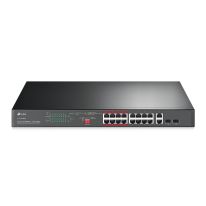-
SKU: UB.USW.FLEX.3 Ubiquiti | USW-Flex-3 | UniFi Switch 5 Ports POE 46W x 4 Ports Out | 3 Pack$679.02 $590.45Out of stock
-
SKU: UB.UISP.FIBER.XGS Ubiquiti | UISP-FIBER-XGS | UISP Fiber 10 Gbps Uplink / Downlink Up To 20km$449.81 $391.14Out of stock
-
SKU: UB.UISP.FIBER.XG Ubiquiti | UISP-FIBER-XG | UISP Fiber 2.5Gbps Uplink / 10Gbps Downlink Up To 20km$386.08 $335.72Out of stock
-
SKU: 006.008.0142 TP-Link TL-SG3210XHP-M2 | JetStream 8 Port 2.5GBASE-T and 2-Port 10GE SFP+ L2+ Managed Switch with 8-Port PoE+$1,430.80 $1,244.17Out of stock
-
SKU: UB.WAVE.NANO Ubiquiti | Wave-Nano | UISP Wave Nano 60GHz + 5GHz 60 PtMP Station
Single Pack
$508.65 $442.30Out of stock -
SKU: UB.WAVE.LR Ubiquiti | Wave-LR | UISP Wave Long-Range 60GHz + 5GHz PtMP Station
Single Pack
$756.23 $657.59Out of stock -
SKU: UB.WAVE.AP.MICRO Ubiquiti | Wave-AP-Micro | Wave Access Point Micro with UISP
Single Pack
$1,331.07 $1,157.45Out of stock -
SKU: UB.WAVE.AP Ubiquiti | UISP Wave AP | Wave-AP | 60GHz and 5GHz PtMP Wave Access Point
Single Pack
$1,331.07 $1,157.45Out of stock -
SKU: U.POE.AF Ubiquiti | U-POE-AF | PoE Injector 802.3af Supported PoE Injector - up to 15W of PoE
Single Pack
$24.52 $21.32Out of stock -
SKU: UB.USW.ENTERPRISEXG.24 Ubiquiti | Unifi Switch | USW-EnterpriseXG-24 | UniFi Switch Enterprise 24 port Switch 24x10GbE Ports, 2x 25G SFP28 Ports For Uplinks, Managed Layer 3 Switch$3,007.77 $2,615.45Out of stock
-
SKU: UB.GBE.PLUS Ubiquiti | AirMAX | GBE-PLUS | 60GHz AirMax GigaBeam Plus Radio, Up to 1.5km range Low Latency 1.5+ Gbps Throughput$464.52 $403.93Out of stock
-
$516.01 $448.70Out of stock
-
$339.50 $295.22Out of stock
-
$122.57 $106.58Out of stock
-
$540.51 $470.01Out of stock
-
$358.62 $311.84Out of stock
-
$561.35 $488.13Out of stock
-
SKU: 006.008.0172 TP-Link TL-SL1311P | 8 Port 10/100Mbps + 3 Port Gigabit Desktop Switch with 8 Port PoE+$237.67 $206.67Out of stock
-
SKU: 006.008.0164 TP-Link TL-SF1005LP | 5 Port 10/100 Mbps Desktop Switch with 4 Port PoE$117.88 $102.50Out of stock
-
SKU: 006.008.0158 TP-Link TL-SL1218MP | 16-Port 10/100 Mbps + 2-Port Gigabit Rackmount Switch with 16-Port PoE+$604.33 $525.50Out of stock
-
SKU: 006.008.0141 TP-Link TL-SF1016DS | 16-Port 10/100Mbps Desktop/Rackmount Switch$125.73 $109.33Out of stock
-
SKU: 006.008.0140 TP-Link TL-SF1024D | 24 Port 10/100Mbps Desktop/Rackmount Switch$173.65 $151.00Out of stock
-
SKU: 006.008.0131 TP-Link TL-SX105 | 5 Port 10G Multi-Gigabit Desktop Switch$1,033.08 $898.33Out of stock
-
SKU: 006.008.0130 TP-Link TL-SX1008 | 8 Port 10G Multi-Gigabit Switch$1,351.25 $1,175.00Out of stock
Network Switches
164 Results






























